There was another discussion going concerning the Connorized rolls that were sold as "hand-played" by Scott Joplin in 1916. This is a very old discussion topic indeed. But I've noticed that in all of the discussion I've seen over the years about this, nobody seems to have explicitly shown how the rolls in question were arranged, which has a great deal to do with the plausibility or lack thereof of the claim that the rolls were actually cut from Scott Joplin's live playing on a recording piano of some kind, or instead are they 'drafting table' arrangements. Here was my contribution of some hard data to this discussion.
Ok, if you will tolerate some actual measurements, I will show an analysis of one of these Joplin rolls on Connorized. This is the one I have an original of, which is Weeping Willow:
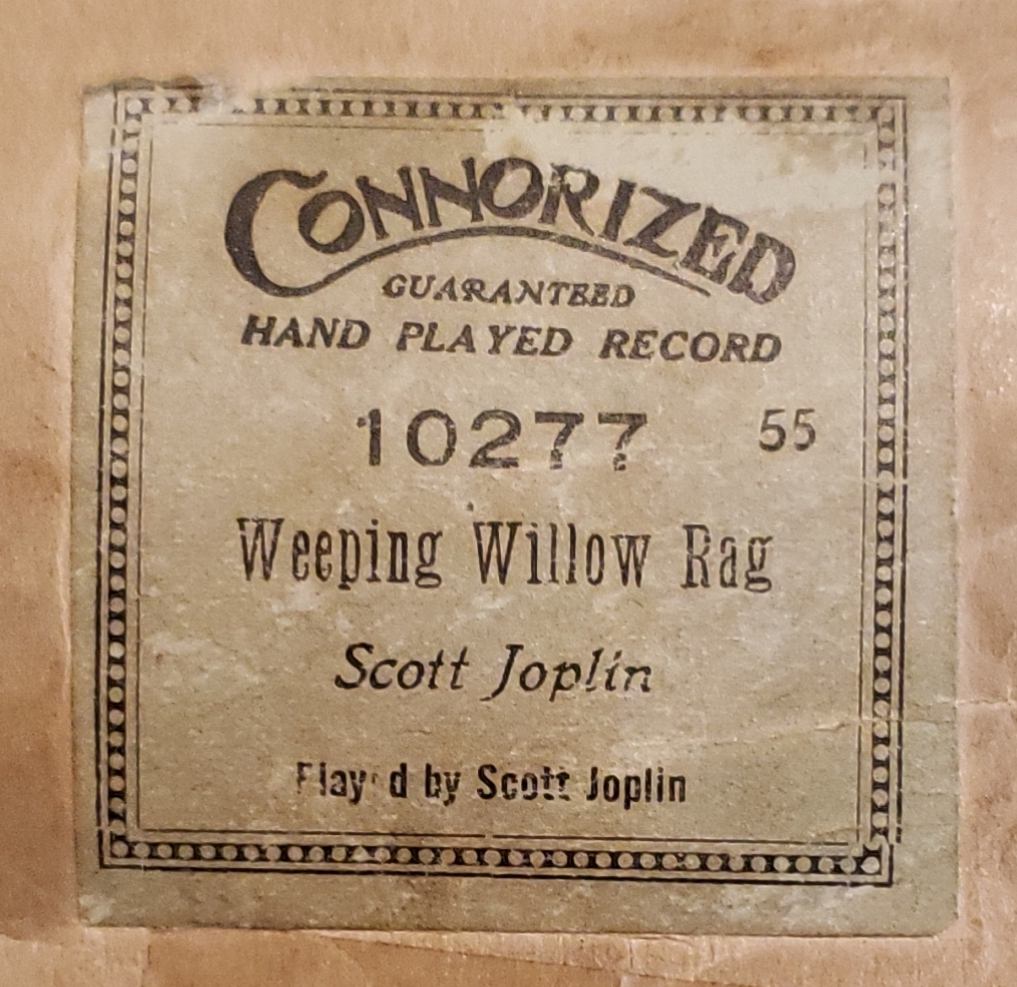
Now, here is the leader:
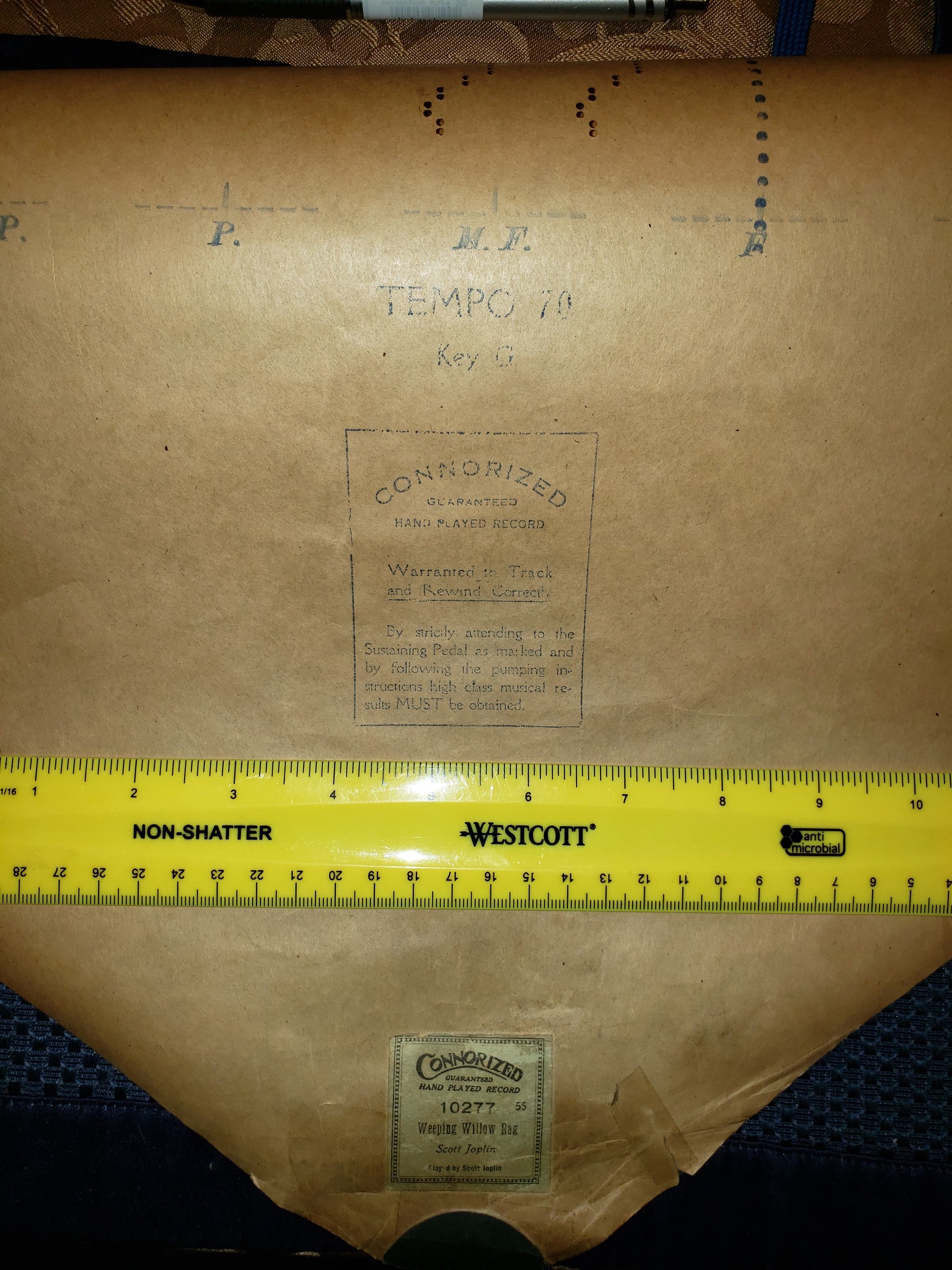
Notice the indicated "Tempo 70", which means if the governor is regulated correctly one is suggested to play the roll at 7 feet per minute. If we flip the roll over, the opening of the tune looks like this:
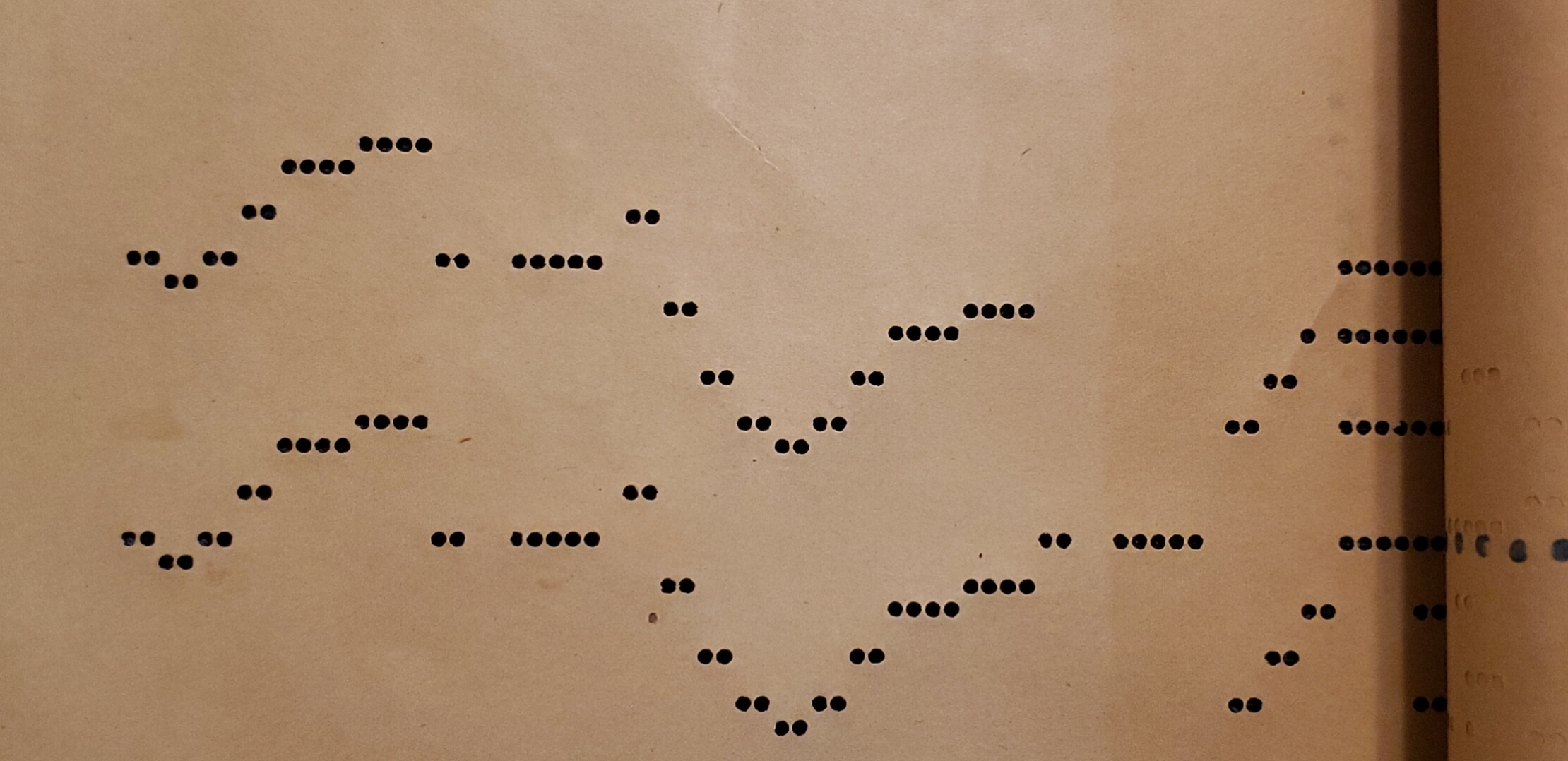
If you compare that to the published score of the opening,
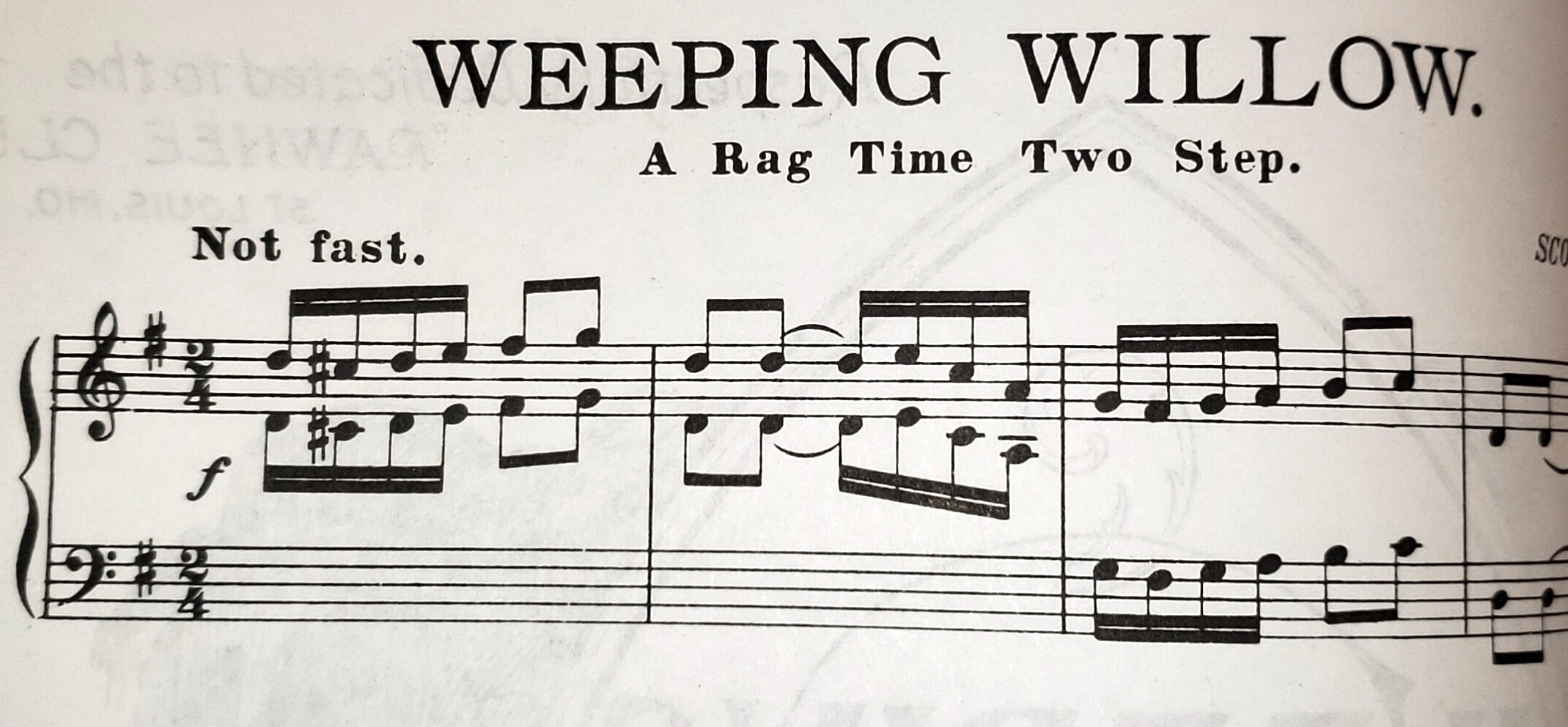
it is easy to see that one advance of the perforator, one row is half of a sixteenth note (a thirty-second note), so that one quarter note is 8 advances.
The roll is arranged at 8 advances per beat (a quarter note in 2/4 time). The significance of this is that with a quarter note divided into 8, no rhythmic subtlety is possible. A triplet would not be exactly even, and were there any triplet sixteenth notes, they could not be rendered, as one eighth note is 4 advances. In the case of this piece there are no such triplet sixteenths or triplet eighths in the score, so this does not present a difficulty, as long as one is satisfied with a strict rendering of the score.
Now, let's measure the advance with an ordinary ruler (in inches, Europeans, please pardon my provinciality!):
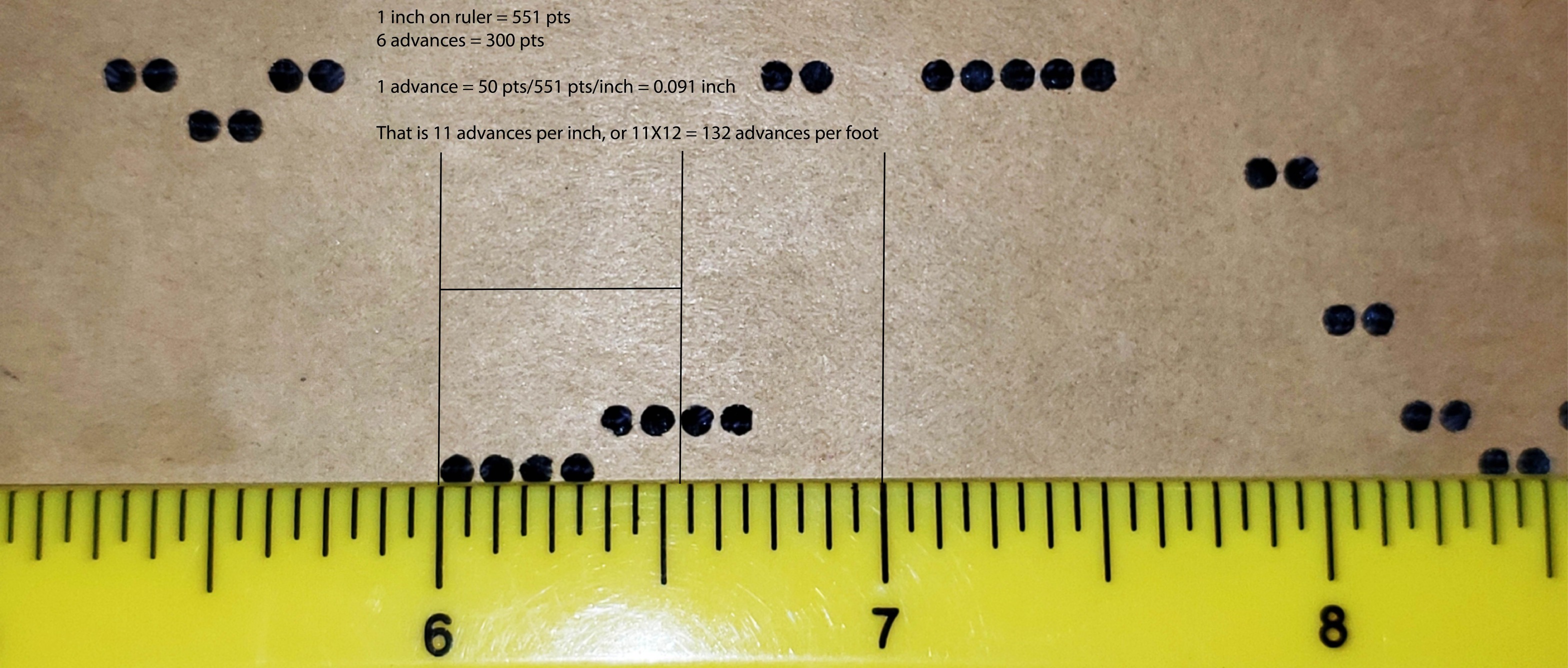
You can see I've annotated the photo with the calculation, which shows that there are precisely 11 advances per inch, or 132 advances per foot. One thing of mild interest is to figure out what musical tempo the Connorized folks thought was appropriate for this 1903 Missouri classic rag, in 1916: 1 quarter note = 8 advances at 11 advances/inch, which comes to 11/8 = 1.375 quarter note per inch, or 16.5 quarter notes per foot. At 7 feet per minute, that's 115 quarter notes per minute. Set your metronome to 115 beats per minute, and you will hear that this tempo will really make you sit up. It's a regular march tempo, usually defined as about 120 beats per minute (think "Stars and Stripes Forever"). I cannot say I have ever heard anyone play this piece in public at a tempo like that. But that's in accord with almost every analysis of the evidence from the period - tempos were FAST. I really have to doubt Joplin would have been happy with that kind of tempo for this piece. He certainly must have been feeling kind of an anachronism by that point in NYC, in his forties! (Remember the music he was immersed in at that place at that time - think Jim Europe's recordings like "Castle House Rag" or "Too Much Mustard". Yikes.)
Anyhow, the point really is that if they based the roll on Joplin's playing, with that very coarse stepping rate there hardly is room for much individuality in a player's style to be reproduced in the roll. It sure would be interesting to get a look at the Uni-Record roll of Maple Leaf to make the similar measurements. I'm sure they used a much finer advance to try to actually record the playing at that time, but the results were not too pleasant. It's pretty easy to see why the dance rolls very soon afterwards went to a hybrid method of basing an arrangement on the recording, whether it was done with real-time perforation or with a marking piano.